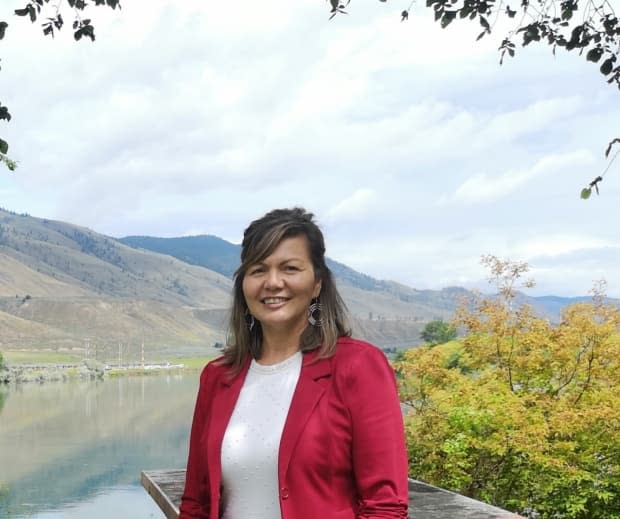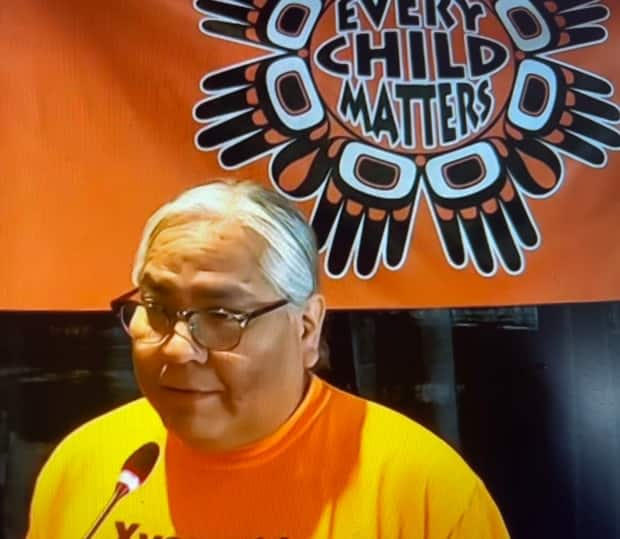Indigenous people flooded with requests to survey potential graves

WARNING: This story contains distressing details.
Tk'emlúps te Secwépemc leaders say Indigenous people across Canada have been inundated with ground penetrating radar specialist requests to survey former residential schools grounds and worry that some may be taken advantage of.
"Not all opportunities are created equally," said Kukpi7 (Chief) Rosanne Casimir during a webinar for Indigenous people and selected representatives from the media to learn more about remote sensing technologies.
The event, put on by the Tk'emlúps te Secwépemc, in partnership with the Canadian Archeological Association and the Institute of Prairie and Indigenous Archeology, outlined how ground penetrating radar (GPR) and other remote sensing technologies work, their cost and ways to use them to help Indigenous people make informed decisions.
Steve Sxwithul'txw, a survivor of the Kuper Island Indian Residential School who is from the Penelakut Tribe said he has received about 10 calls from companies soliciting services to use GPR near former residential schools.
"I have to admit, it didn't feel as sincere as I would have hoped," Sxwithul'txw, said.
"Obviously, there's always a price tag," he said, adding that it's a specialized area scientifically and that there needs to be knowledge of how the technology and experts work.

'Give children the dignity they deserve'
During the webinar, archeologist Dr. Sarah Beaulieu said while other systems like aerial based remote sensing and multispectral sensing are useful, ground penetrating radar is a gold standard of practice when it comes to detecting unmarked graves and burial sites on the grounds of former Indian residential schools.
In her presentation, Dr. Lisa Hodgetts, who is part of the Canadian Archeology Association's unmarked graves working group said, in tandem with these technologies, there must be other efforts to help locate missing children.
She called on institutions who have residential school records to release them immediately and said mapping sites around former schools is particularly important in cases where schools were built and rebuilt over time.
"It is important to narrow the scope and focus on more specific areas where ground-penetrating radar can be done, " she added.
She and others reiterated that the science follows the evidence of survivor oral tellings that they dug graves for other children — testimony documented by the Truth and Reconciliation Commission.
"We need to give the children the dignity they never had, " Casimir said during the presentation.
Sxwithul'txw said in order to provide justice for those who made it home, Indigenous people need to know how GPR works and learn how to sniff out the companies that are not the best for the community.
"I'm trying to investigate and find out what is the best machine, what's the best dollar amount we need to spend, and do we need to go beyond machines," he said.
Tk'emlúps te Secwépemc leaders have said one of the next steps for them is to look at excavating the area with cultural and spiritual protocols in mind.
Through a GoFundMe campaign Sxwithul'txw and others have raised more than $150,000 to help Indigenous communities find potential gravesites near former Indian residential schools on Vancouver Island
This week, the B.C. government announced it will provide funding to 21 First Nations communities to help with searches for remains at former residential schools or hospitals.
More areas, including a garbage dump to survey
Another speaker, Ted Gottfriedson who is the department manager at Tk'emlups te Secwepemc, said there are still more grounds to survey on his people's lands.

"It is the survivors who tell us where to search," he said. "And our next target should be the old dumpsite of the residential school and the horrible stories of children being thrown in the garbage dump."
He said his community used funding from a Pathways to Healing grant from the federal government to survey the Secwepemc Museum & Heritage Park that was once an apple orchard near the former Kamloops Indian Residential school.
Survivors have told stories of being woken up in the middle of the night to dig holes in the area.
__________________________________________________________________________
Support is available for anyone affected by the lingering effects of residential school and those who are triggered by the latest reports.
A national Indian Residential School Crisis Line has been set up to provide support for residential school survivors and others affected. People can access emotional and crisis referral services by calling the 24-hour national crisis line: 1-866-925-4419.

